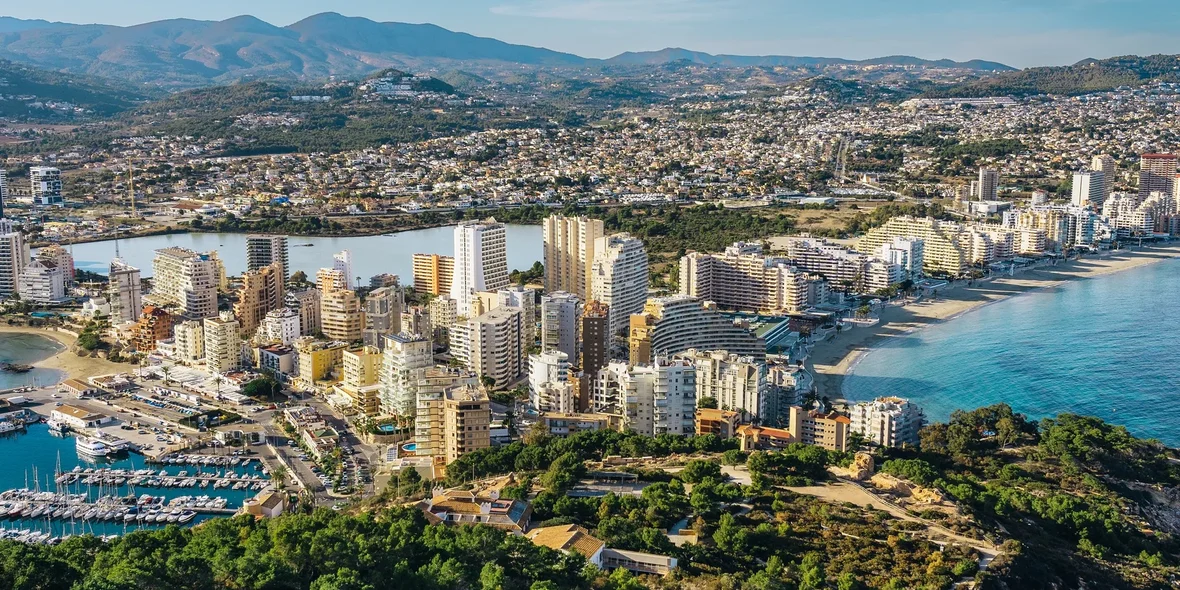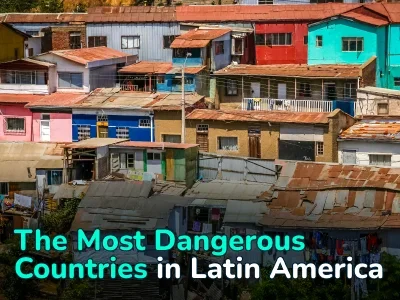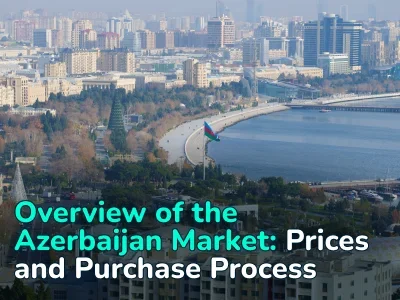
Buying Property in Spain 2025: Prices, Locations and Investment Prospects From an Expert
In October 2024, the Spanish property market delivered a surprise: almost 64,000 transactions for the month and an increase of 18.82% from last year. At the same time, the total supply in the market has collapsed by 40% since the start of the pandemic. This imbalance between high demand and limited choice of properties creates a unique situation for buyers, investors, and locals.
About what to expect from the Spanish market in 2025, which cities show the best returns, and which foreigners have suddenly become the main players in the market — we’ve been told by the managing director of the real estate agency Inmobiliaria Casamayor, Pedro Casamayor Abadia. In the interview, the expert shared real prices for apartments in different regions and explained why it is now almost impossible to bargain with sellers.
Market supply will continue to decline in 2025
On the Spanish Real Estate Market Updates
— What are the latest news and updates on the Spanish real estate market?
— Sure! The Spanish real estate market has been experiencing significant growth in home sales and purchases. According to recent data, in October 2024, there were 63,667 transactions recorded, representing an increase of 18.82% compared to the same month a year earlier.
In terms of supply, since the pandemic, there has been a 40% decrease across Spain, which has affected the availability of homes for sale. This has been the main reason for the rise in prices.
Regarding new construction, buyer interest has been increasing, especially in Madrid, where 22% of buyers are exclusively looking for this type of property.
In the rental sector, prices are expected to increase by an estimated 10.3% in 2025 due to the shortage of supply and growing demand. These dynamics reflect a market that is in constant evolution.

— On May 24, 2023, Spain adopted Law 12/2023 “On the Right to Housing” (Ley de vivienda), which came into effect on May 26, 2023. What are the main changes, how have they already affected the market, and what is expected in the future?
— Law 12/2023 introduced important reforms in the Spanish real estate market to protect tenants and promote access to affordable housing. The main changes include:
- Rent regulation: in areas where housing prices are high, rent increases for large tenants (people with more than 5 rental properties) are limited.
- Declaration of stressed areas: city councils and communities can identify areas with disproportionate prices.
- Tenant protection: the collection of agency fees from tenants is prohibited, and squatter’s eviction terms are extended for vulnerable cases.
Current impact: the increase in rental prices is due to a decrease in supply because many landlords withdrew properties from the market due to regulatory uncertainty.
On Properties That are in Great Demand
— What kind of real estate are you most likely to sell? What exactly is in demand among different population groups, younger and older?
— Demand for real estate in Spain varies significantly by age group, reflecting differences in priorities and purchasing power:
- Young people (20–35 years old): small (1-2 bedroom) and affordable housing in good urban locations is in high demand. Close proximity to services, public transport, and space for telecommuting are key factors. Housing with common areas such as terraces or coworking spaces is also gaining popularity.
- Adults (35–55 years old): family housing (3–4 bedrooms) in peripheral or residential areas is preferred. Large spaces, energy efficiency, and access to schools and family services are also important considerations.
- Seniors (55+ years): affordable, comfortable housing in quiet surroundings is in high demand. Apartments in urbanizations with services such as doormen, elevators, and gardens are gaining relevance. Proximity to health centers and smaller homes after retirement are also important factors.
General trends: sustainability and energy efficiency are cross-cutting demands. Interest in new construction is growing, but the second-hand market continues to dominate in terms of price and availability.
— How many transactions per month do you make on average by the end of 2024? And what are the dynamics compared to last year?
— We have segmented our teams and business units into areas such as residential resales (sales and rentals), new developments, and the investment and corporate area.
Globally, we expect to close this historic 2024 with around 1000 transactions per year (around 85 per month), a growth of around 30% compared to 2023.
We expect 2025 to be a year of consolidation of these impressive numbers, although the main challenge is maintaining the portfolio stock. Aggregate data for Spain indicates that the stock of properties for sale or rent has dropped significantly, and this trend will continue.
On Price Dynamics and Factors That Influence It
— How has the market been affected by the prime rate hike from the European Central Bank and the subsequent rise in EU lending rates through the second half of 2022? And what are you observing now that rates are coming down? What are the price dynamics, and what is the pace of house price growth?
— The European Central Bank (ECB) interest rate hike from mid-2022 had a significant impact on the Spanish real estate market, making it more difficult to access credit. With more expensive mortgages, purchasing power decreased, especially affecting young people and families with lower savings.
Currently, the trend has begun to change with the recent moderation of interest rates. Real estate activity has increased, reactivating demand, especially for new construction. After several years of strong price increases, we believe that the market will continue with price increases due to the shortage of properties, but at a slower pace than in 2024.
— How likely are potential sellers to bargain, in your opinion?
— I believe that the margin for buyers to negotiate a lower price is very low. As we mentioned before, 2025 is a year in which supply will continue to fall, with strong demand from both Spanish and foreigners from all over Europe. This creates a situation of strength on the part of sellers against buyers.
This scenario indicates that many transactions will be carried out practically without negotiation or with a low percentage. Only exceptionally some operations will be closed with a high price adjustment, but for reasons of extraordinary necessity or urgency of the seller.
— Let’s give specific examples: for how much can one buy an apartment in Madrid and other Spanish cities/regions today on average, and how much did the same property cost a year or two ago?
— The increase in prices is difficult to quantify in a general or global way since it has had a different behavior in coastal areas compared to urban centers or rural areas.
For example, in Alicante city, which has experienced a very strong increase of foreign buyers in the last year, a house in good condition with 3 bedrooms and 2 bathrooms has gone from costing about €240,000 to about €275,000. In beach areas, the price increase has also been in double digits.
There is a huge demand from Poles right now.
On Foreigner’s Demand and Best Locations to Consider
— Who among the foreigners buys real estate in Spain most often, and why?
— If we focus on the Costa Blanca area, we can say that if 2023 was the year of the Ukrainians, 2024 has definitely been the year of the Poles. The volume of sales with buyers of this nationality has beaten any previous expectations. There are markets that remain strong and stable, such as the Dutch, Belgian, and, to a lesser extent, French and German.
The main reasons are:
- Holiday homes: the climate and quality of life are key factors.
- Investment: high rental profitability, especially in tourist areas.
- Permanent relocation: retired or remote workers are looking for a more economical and relaxed life.
— What locations for buying a home/apartment would you recommend?
— The first thing to do before recommending the best area for the purchase of a property is to understand the client’s needs. If he/she is looking for proximity to the sea, to be in an urban center, rural area, etc. Knowing the factors that are key for the client (proximity to leisure such as restaurants, bars, etc., health centers, good communications, etc.) is key to determining which area is the best for that client.
Currently, the whole area of the Costa Blanca is very interesting for purchase as it is still a sought-after area but with prices below other areas such as Costa del Sol. There are places like Torrevieja, Orihuela, etc. in the south of Alicante with affordable prices, or places like Denia, Javea, Benidorm, Calpe, etc. that offer higher price tickets but at the same time more exclusivity.
— How can the Spanish housing market be attractive in comparison with the markets of Portugal, the south coast of France, and Italy?
— The Spanish real estate market stands out from Portugal, the southern coast of France, and Italy for several factors that make it particularly attractive to international investors and buyers:
1. Competitive prices: prices are lower on average than in the Côte d’Azur (France) or Tuscany (Italy). For example, the price per m² in Alicante or Malaga is around €2000—€3000, while in the French Riviera, it exceeds €10,000, and in areas of Italy it can reach €5000—€7000.
2. Rental profitability: Spanish coastal areas offer rental yields around 6-7%, higher than in Portugal and similar to Italy.
3. Infrastructure and connectivity: Spain has an excellent transport network (AVE, international airports), standing out compared to regions in Italy or Portugal.
4. Climate and lifestyle: although comparable in climate with the south of France and Portugal, Spain offers more hours of sunshine per year and a wide cultural, gastronomic, and social offer.
In summary, the combination of moderate prices, high profitability, quality of life, and good connectivity makes Spain a more accessible and profitable option compared to neighboring markets.
Author
I am responsible for editorial work. I write expert interviews and guides.
























